In the realm of financial security, recent findings from Javelin’s 2019 Identity Fraud Study reveal a paradoxical trend: while there has been an overall decrease in instances of fraud, there is a troubling rise in high-impact bank fraud. This category of fraud includes egregious actions such as fraudsters opening new accounts in the names of unsuspecting victims or taking control of existing accounts through mobile devices. Alarmingly, nearly 25% of individuals who fell prey to fraud in 2018 incurred out-of-pocket expenses, a figure that is nearly three times greater than that recorded in 2016.
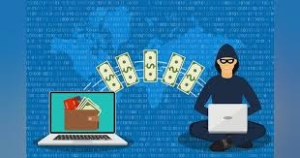
Given these unsettling statistics, it becomes imperative to take proactive measures to safeguard oneself against the looming threat of bank fraud.
In this discussion, we will delve into several key areas:
– Identifying the signs of bank account fraud
– Nine practical strategies to prevent bank fraud
– The proper procedures for reporting incidents of bank fraud
– A comprehensive overview of the current state of bank fraud
Let’s start by exploring how to identify potential bank account fraud. Fraudsters employ three prevalent methods to infiltrate your banking information: phishing schemes, malware attacks, and various scams.
Phishing is a deceptive practice in which an individual is manipulated into divulging personal details. It is often executed by someone masquerading as a legitimate entity—be it a business, employer, or financial institution. Victims may receive tailored emails from addresses designed to resemble those of trusted contacts closely. Furthermore, fraudulent websites and emails can be strikingly similar to familiar ones, enticing individuals to provide sensitive information unwittingly.
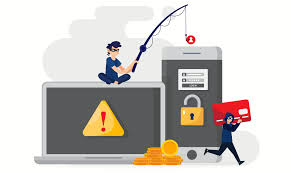
Common examples of phishing attempts include:
– Solicitation for charitable contributions
– Invitations to apply for credit cards
– Promotions for online shopping
– Emails presenting urgent files, like tax documents, which request your login credentials for access
On the other hand, malware—short for malicious software—represents another significant threat. This type of virus is often introduced to devices via email attachments, intrusive internet pop-ups, or the installation of dubious software. Once infiltrated, malware can grant fraudsters unauthorised access to a computer without alerting the user that their device has been compromised.
Such viruses are engineered to circumvent standard security measures and may even incorporate features like keyloggers, which can capture every keystroke made by the user. In addition to potentially crashing your devices, malware can enable nefarious individuals to unnoticed surveil your online activities.
With this understanding of how fraudsters operate, it becomes crucial to remain vigilant and informed about their tactics. Awareness is the first step towards protecting yourself from becoming a victim of bank fraud.
In a world increasingly dominated by technology and digital transactions, the spectre of bank fraud looms large, making it essential for individuals to take proactive measures to safeguard their financial well-being. Here are nine insightful strategies that can significantly diminish your risk of falling victim to such schemes.
First and foremost, let’s delve into the importance of scrutinising your emails with a discerning eye. Phishing attempts often disguise themselves as legitimate communications, and scammers are notorious for mimicking the email addresses of acquaintances with only the slightest alterations. While these subtle changes can serve as a warning sign, it’s crucial to remember that even trusted contacts can have their accounts compromised. Therefore, vigilance is paramount. Look out for telltale signs like spelling errors, unfamiliar links, unexpected attachments, or any language that seems overly urgent or out of place. If anything feels off, resist the temptation to click on dubious links or provide sensitive banking details. Instead, reach out directly to your bank through official channels to confirm the legitimacy of the email.
Next on the list is ensuring that your computer and mobile devices are outfitted with the latest security software. Keeping your antivirus programs up to date is one of the most effective defences against both phishing attacks and malware infections. Cybercriminals are constantly refining their tactics, which is why software developers regularly release updates that enhance security features. Make it a habit to check for updates frequently; this simple act could save you from potential threats lurking in the digital shadows.

Moving on, let’s discuss the importance of being cautious with downloads. In an era where information flows freely online, not every file or application is safe. It is essential to verify the authenticity of any content you consider downloading and to steer clear of suspicious pop-up advertisements that could lead you astray. If your device starts exhibiting strange behaviours—such as unexpected shutdowns or an uptick in intrusive ads—it may be an indication that your system has been compromised. Should you find yourself in this predicament, experts from the University of Texas at Austin’s Center for Identity advise you to cease using your device for any activities involving personal data, such as shopping or banking. Ensure your security software is up to date and conduct a thorough scan of your system. If issues persist, seeking assistance from an IT professional may be your best course of action.
Lastly, let’s explore safer methods for online shopping. While altogether avoiding online purchases may be unrealistic in our fast-paced world, there are strategies you can employ to mitigate risks. One practical approach is to use a prepaid debit card loaded with just enough funds for your intended purchase. This way, you limit your exposure by not linking your primary bank account directly to online transactions.
By adopting these prudent practices, you not only empower yourself to navigate the digital landscape more safely but also bolster your defences against fraudsters’ ever-evolving tactics. Staying informed and vigilant is key; after all, knowledge is your best ally in the fight against bank fraud.

In today’s digital landscape, safeguarding your financial information is more crucial than ever. For instance, if someone were to gain access to your account details, it wouldn’t necessarily mean they could tap into your bank funds. When it comes to online purchases, opting for a credit card over a debit card is often the wiser choice. Credit cards typically come with lower liability limits, which protects you from being responsible for any unauthorised transactions that may occur.
One of the most effective strategies against potential scams is to maintain a healthy scepticism. It’s vital to approach unsolicited communications—be they emails, text messages, or phone calls—with a critical eye, mainly when they originate from unknown sources or unfamiliar entities. This caution is significant when such messages contain links, attachments, or requests for sensitive personal data. Before disclosing any personal information, make sure to authenticate the claims presented to you; furthermore, never open attachments unless you can confirm the sender’s identity.
When it comes to protecting your accounts, the importance of having strong passwords cannot be overstated. Gone are the days when simple passwords like “Password123” would suffice. Instead, aim to create complex passwords that span at least eight characters and incorporate a mix of uppercase and lowercase letters, numbers, and special symbols. It’s best to steer clear of passwords connected to easily obtainable personal details, such as your birth date or your mother’s maiden name. Moreover, using unique passwords for each of your accounts will add an extra layer of security. If remembering all these passwords proves challenging, consider utilising a password manager to help keep everything organised.
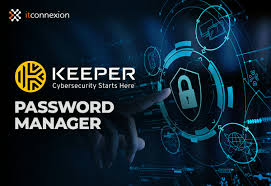
Another robust security measure to employ whenever it’s available is two-factor authentication (2FA). This method enhances your account security by requiring you to verify your identity through a text message or email before you can log in. Implementing this feature adds a significant barrier against unauthorised access.
Regularly monitoring your credit card and bank accounts is also essential for maintaining financial security. Signing up for a credit monitoring service can be beneficial; not only will it keep you informed about your credit status, but some services also offer identity theft protection. Additionally, make it a habit to examine your bank statements frequently to ensure that all transactions align with your expectations.
Lastly, remain vigilant about phone calls requesting personal information. Scammers can be pretty clever in their tactics, often posing as representatives from your bank or well-known companies or even impersonating government agencies like the IRS. They may employ various strategies to gain your trust and extract sensitive information from you. Always remember: if something feels off or too good to be true, it probably is. Trust your instincts and prioritise your security above all else.
If you have any doubts about the authenticity of a call you’ve received, it’s wise to disconnect the line. Instead, take a moment to search for the organization’s official contact details online and reach out to them directly. This will ensure that you’re communicating with the right entity.
In terms of protecting your financial identity, one drastic measure you might consider is freezing your credit. However, it’s essential to understand that this action primarily safeguards against fraudsters attempting to establish new accounts in your name. Unfortunately, it doesn’t stop criminals from misusing your existing credit cards or thwart identity theft efforts.

Should you find yourself in a situation where you suspect fraudulent activity within your bank account, it’s crucial to act swiftly. Immediately notify your bank to make them aware of the potential fraud. Following that, take proactive steps by changing your passwords, PINs, and any other login credentials to mitigate further risks. If you’re looking to report consumer fraud, you can contact the Federal Trade Commission by calling 1-877-FTC-HELP. For issues explicitly related to identity theft, the website IdentityTheft.gov offers resources and guidance.
If you believe that your Social Security number has been compromised, you may want to reach out to the Social Security Administration’s Fraud hotline at 1-800-269-0271. Additionally, it’s advisable to scrutinise your credit report thoroughly. Should you come across any accounts that you did not authorise or open, you have the right to request their removal from your report. You’ll need to get in touch with the credit bureau for this process and also notify the institution where the unauthorised account was created to ensure it is closed.
When it comes to how banks handle unauthorised transactions, they take these reports very seriously. Once you alert them about an unapproved transaction, they are obligated to investigate your claim diligently to confirm whether it is indeed fraudulent. During this period, your account will likely be frozen for security reasons, and a new debit card will be issued to you.
Typically, banks have a window of 10 business days to complete their investigation; however, if your account is less than 30 days old, they’re allowed up to 20 days. If the bank requires additional time for a thorough investigation, they may provide you with a temporary reimbursement for the missing funds, although they reserve the right to deduct up to $50 from this amount.
You may be asked to provide written confirmation regarding your claim, and it’s best to respond promptly in order to facilitate a quicker investigation. If the bank concludes that a transaction was indeed fraudulent, they are required to return any stolen funds to you within one business day. This process, while sometimes lengthy and requiring vigilance on your part, is designed to protect your financial well-being and restore your peace of mind.

In recent years, banks have significantly ramped up their efforts to combat bank fraud, introducing a variety of credit-monitoring features and enhanced security measures. These advancements aim to protect customers from unauthorised transactions and potential identity theft. However, while these systems are robust, they are not foolproof.
As a customer, your vigilance plays a crucial role in safeguarding your financial information. Regularly checking your bank accounts is essential. By monitoring your transactions, you can quickly spot any suspicious activity and report it to your bank before it escalates.
Additionally, staying informed about common scams and phishing schemes is vital. Fraudsters are increasingly sophisticated, often using clever tactics to trick individuals into revealing sensitive information. Being cautious with emails and messages that request personal data can help you avoid falling victim to such traps.
Ultimately, the partnership between banks and customers is key in the fight against fraud. While banks provide the tools and protections, your proactive approach can make all the difference in keeping your finances secure.
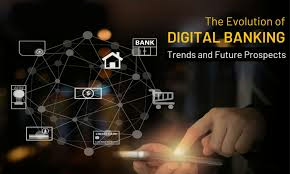
Maxthon
Maxthon is poised to transform the realm of cloud gaming with its groundbreaking browser, meticulously crafted with gamers at its heart. At its essence, Maxthon is powered by a sophisticated array of algorithms designed to dramatically boost speed and performance, creating an environment where gaming can genuinely thrive. These cutting-edge technologies harmoniously collaborate to produce stunning visuals while effectively eliminating any lag that could mar the gaming experience. For those who crave a fully immersive journey, this seamless integration transcends mere convenience; it becomes a vital aspect of the gaming adventure.
Yet, Maxthon’s allure extends far beyond its striking graphics. The browser harnesses advanced data management strategies that drastically shorten loading times between levels or game modes. This means that players can plunge straight into the excitement without having to endure frustrating delays, allowing them to savour every exhilarating moment of their gaming quests.
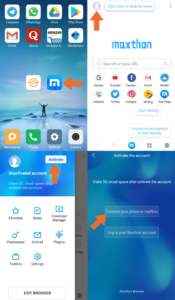
In addition to its remarkable speed and visual appeal, Maxthon strongly emphasizes reliable connectivity. Gamers can count on a stable connection with minimal disruptions, whether they are engaging in solo play or joining friends for online battles. This dedication to sustaining robust connections significantly elevates the overall gaming experience, ensuring that players remain immersed in the action.
One of the most remarkable aspects of Maxthon is its ability to function seamlessly across a multitude of devices. Be it a smartphone, tablet, or desktop computer, accessing your favourite games has never been easier; you are no longer confined to a single console. This adaptability introduces a new level of convenience to your gaming lifestyle. Picture yourself sinking into yourfavouritee chair after a long day, effortlessly picking up right where you left off with just a few taps on your device—this indeed illustrates the brilliance behind its cross-device functionality.
Moreover, Maxthon’s user interface plays an indispensable role in enhancing the overall experience. Its design prioritises ease of use and accessibility, ensuring that gamers can navigate through their options intuitively. As players explore this innovative browser, they will find that every feature has been thoughtfully integrated to contribute to an enriched and enjoyable gaming environment. In summary, Maxthon is not just a browser; it is a revolutionary platform that redefines how gamers engage with their favourite titles in the ever-evolving landscape of cloud gaming.
